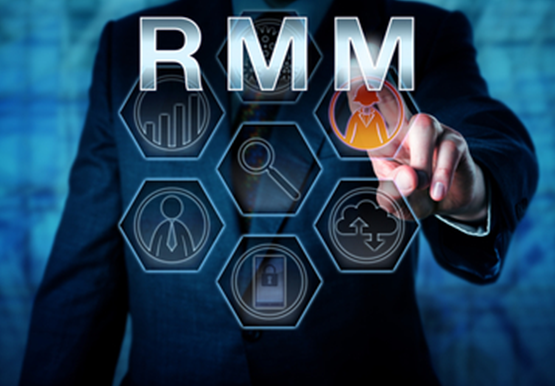People today like to bring their mobile devices to work. These endpoint devices contain their personal and sensitive data. These include their credit card numbers and home address, among other information. Monitoring and managing these mobile devices is a challenging task. Using an RMM tool would be the solution. But what does RMM mean?
It is the tracking, monitoring, and managing of endpoint devices for various clients. Another term for remote monitoring and management (RMM) is network management. What does RMM mean and why is it important? It is a tool that helps managed IT service providers (MSPs) do their job. They can manage endpoints from any location. That is a convenient way of doing things and saves money, time, and effort.

RMM software is a tool that MSPs use in providing IT services to organizations who outsource their IT needs. What does RMM mean and what do you gain from it? Outsourcing your IT needs allows MSPs to manage your network from any location. This reduces downtime so your business is always up and available for your customers.
An RMM tool works by placing “agents” across the network. These agents gather data from workstations, mobile devices, and other endpoints. They send the collected data to the RMM tool so an MSP technician can make use of it. This collected data gives a picture of the client network’s infrastructure.
In the next section, you will learn about the amazing benefits and functions of RMM.
Main Functions of RMM Software
The major functions of RMM software benefit both MSPs and break-fix customers. Here are the primary functions of RMM software for MSPs:
- RMM software helps in collecting data about the client’s network and system. This includes the health and status of computers.
- It aids in maintaining and updating client systems.
- RMM software can track problems and resolve them from a remote location. This is possible by creating tickets and resolving concerns.
- It assists in resolving problems even before the client sees them.
- It can apply patches and install application updates through a central dashboard.
- RMM software can perform simultaneous tasks in many systems from a remote location.
- It aids in automating scheduled maintenance tasks at the clients' premises.
Here are the primary functions of RMM software for break-fix customers:
- RMM software aids in resolving problems about irregular workflows for the IT provider.
- It assists those who have irregular income issues with no recurring revenue model.
- It helps break-fix customers who suffer from multiple problems.
- RMM resolves minor problems that could escalate to bigger ones if not attended.
- It helps in resolving matters related to outdated systems with inconsistent updates.
- RMM software can help in resolving problems arising out of data breaches.
The Benefits of RMM
Outsourcing the IT needs of your organization is a cost-effective move. It saves you precious time, money, and effort. RMM software provides you with many benefits:
Has Enterprise-Level Automation and Monitoring.
RMM helps small and medium-sized businesses (SMBs) with enterprise-level monitoring and automation.
Detects Issues Before It Causes Critical Problems and System Failure.
RMM can prevent critical issues from happening. This is possible through the help of agents that collect data from the system. They inform the MSP technicians various details about the client’s network.
Helps in the Systematic Handling of the Client’s IT Requirements.
Remote monitoring and management tools follow the business requirements of the client. They make your business compliant with security standards, policies, and regulations.
Ensures Optimal Network Stability
RMM tools ensure that your network is available and performing at its best setting. There should be no work interruptions in a stable network.
Improves the Client’s System Performance.
The main purpose of an application is to simplify computing tasks. It is convenient to observe and manage a network from a distant location. This provides a clear view of what components need proper configuration. This leads to a boost in network performance.
Raises the Customer Base of MSPs.
A happy customer is also a satisfied customer. They share their product experience with their friends. This triggers a “word-of-mouth” chain reaction that attracts more clients. In the long run, this will lead to more profits.
Keeps Client-Related Issues Under Control.
An RMM tool gives a clear view of the client’s network. Visibility helps in keeping things under control. Many problems are avoidable if you have a picture of every component of your network.
Lengthens the Lifespan of Devices.
RMM tools give you status updates about your client’s network. You can see which computing device needs maintenance, repair, and replacement.
Ensures Better End-User Productivity.
Employees are happy if they can do their work without any interruption. This gives them a positive experience that makes them more productive at work. This, in return, will give your business more profits.
Conclusion - Remote Monitoring and Management (RMM)
Now you know what does RMM mean, its functions, and its amazing benefits. Now you are also aware of what RMM can do for your organization or business. For more information on remote monitoring and management, please click here.